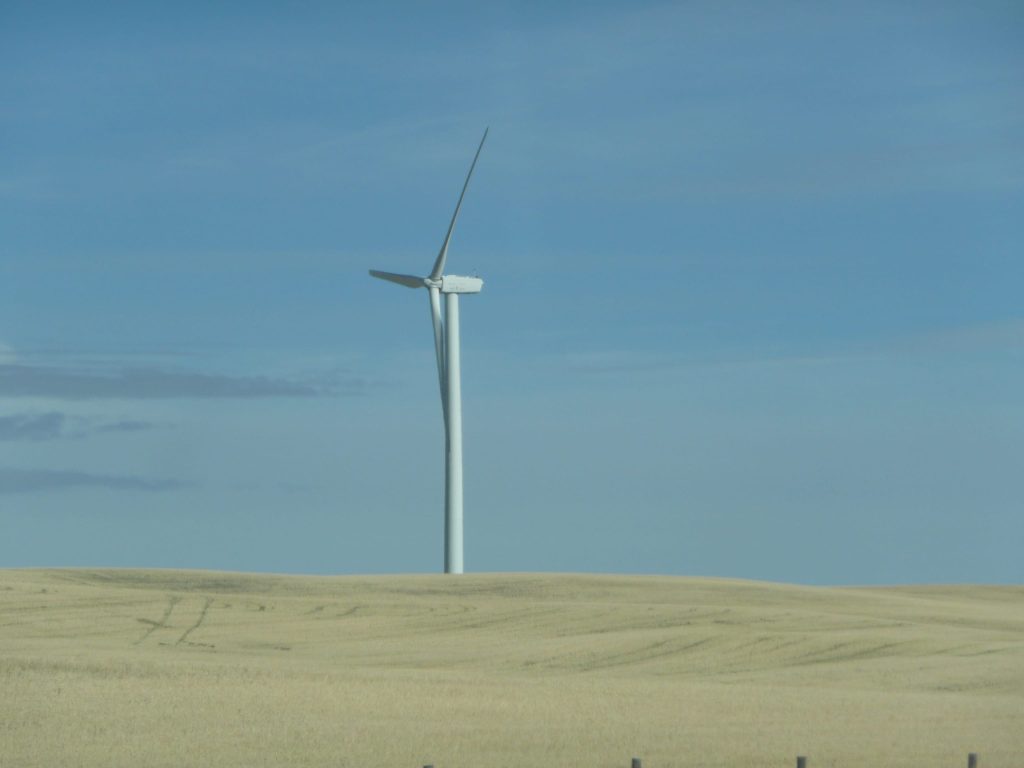WIND POWER PROJECTS
For over 50 years, LGL has played a critical role in helping offshore operators understand and comply with federal and state requirements for development activities by preparing scientifically sound assessments and conducting rigorous research and monitoring programs.
Contacts:
- United States: Darren Ireland
- Western Canada: Marc d’Entremont
For over 50 years, LGL has played a critical role in helping offshore operators understand and comply with federal and state requirements for development activities by preparing scientifically sound assessments and conducting rigorous research and monitoring programs.
Contacts:
- United States: Darren Ireland
- Canada: Marc d’Entremont
For over 50 years, LGL has played a critical role in helping offshore operators understand and comply with federal and state requirements for development activities by preparing scientifically sound assessments and conducting rigorous research and monitoring programs.
Contacts:
- United States: Darren Ireland
- Canada: Marc d’Entremont
OFFSHORE WIND PROJECTS
MARINE MAMMAL PROTECTION ACT TAKE AUTHORIZATIONS FOR HRG SITE RECONNAISSANCE SURVEYS
LGL prepared Incidental Harassment Authorization (IHA) applications to the National Marine Fisheries Service (NMFS) for conducting high-resolution geophysical (HRG) site reconnaissance surveys in Lease OCS-A 0521. LGL worked closely with Mayflower Wind regulatory and technical personnel to describe the survey plans and equipment and to identify the most appropriate strategy for permitting the work. During NMFS’ review of the application materials, we quickly addressed questions and numerous requests for additional acoustic modeling of specific sound sources by working directly with technical personnel at NMFS. This led to successful granting of approvals to conduct work with and without take authorizations from NMFS.
AERIAL SURVEYS FOR LARGE WHALES IN THE NEW YORK BIGHT
LGL participated in aerial surveys of the New York Bight for the New York State Department of Environmental Conservation. This project involved monthly manned aerial survey flights where observers collected data on large whales and other marine fauna in real time. LGL provided expert aerial observers and data collection methods as well as conducted highly‑technical data analysis to calculate density and abundance in the survey area. The results were intended to help inform siting decisions and potential impacts from offshore wind developments in the New York Bight and nearby regions.
MARINE MAMMAL PROTECTION ACT TAKE AUTHORIZATIONS FOR OFFSHORE WIND FARM CONSTRUCTION
LGL prepared an IHA application to NMFS for potential takes of marine mammals during construction of the Vineyard Wind 1 development off Massachusetts. Take estimates were calculated using state-of-the-art sound propagation and animal movement simulation modelling (also-known-as “animat” or “exposure” modelling). Estimates were calculated monthly reflecting the best available animal density information in the project location. Potential mitigation measures, including sound attenuation methods and operational protocols, were account for throughout the process and used to develop realistic monitoring plans. This approach improves the likelihood of receiving an IHA from NMFS and ensures a successful installation process. We also prepared and/or edited relevant portions of the Construction and Operations Plan (COP) submitted to the Bureau of Ocean Energy Management (BOEM).
NAIKUN OFFSHORE WIND ENERGY PROJECT
LGL completed an assessment of potential impacts to marine birds and marine mammals as part of the overall environmental assessment for the NaiKun Offshore Wind Energy Project off the coast of British Columbia. The study aimed to present sufficient information, including appropriate avoidance and mitigation measures to provincial and federal governments, First Nations, the public, and stakeholders. The assessment included a review of world-wide research on bird and marine mammal interactions with existing offshore wind farms. This information was combined with pre-existing knowledge and project study data on the birds and mammals of Hecate Strait to generate and test hypotheses regarding potential project effects. A series of mitigation measures and an adaptive management plan for post-construction monitoring was developed. The project was granted both provincial and federal environmental assessment certificates to proceed with construction.
ONSHORE WIND PROJECTS
Sundance Wind Project and Taylor Wind Project
LGL conducted a First Nations independent technical review of the environmental assessment (EA) application for these proposed 250 and 400 MW projects in northeast British Columbia. LGL works in collaboration with the lands departments of Treaty 8 First Nations to ensure key concerns related to impacts to ecosystems, fish and fish habitat, wildlife, traditional land use and cumulative effects are addressed by the project. This work involves the facilitation of community meetings, participation on the EA working group and liaising with the project developer and its consultants.
Nulki Hills Wind Project
LGL was a member of the team that conducted baseline studies and environmental assessment application requirements for a proposed 210 MW project near Vanderhoof, British Columbia. LGL lead acoustic bat detector surveys, bird radar surveys, migration stand watch surveys, breeding bird surveys, visual encounter surveys (amphibians), winter snow track surveys, an aerial ungulate survey, the collection of wildlife habitat suitability data and an aerial overview assessment of waterfowl habitat.
Newfoundland and Labrador Hydro Wind Power Project
LGL conducted a breeding bird survey as part of environmental evaluation process of NL Hydro’s expansion of an existing wind turbine project near Ramea, Newfoundland. The technical report was used as a basis for assessing the requirement of an ongoing bird monitoring program.
Conestogo Wind Farm
As part of an EA, LGL conducted a natural heritage screening assessment and a preliminary bat study for the proposed Conestogo Wind Turbines located near Grand Valley, Ontario. The screening assessment included a literature review, consultation with agencies, interpretation of aerial photography, and classification of vegetation, wetlands, topography, and local hydrology. Project requirements included addressing how the development might affect bat populations. Potential for bat roosting and foraging habitat was investigated at the landscape level. Acoustic monitoring of bats within the project site was also conducted as part of this assessment. A ranking of low, medium, or high risk was provided to Federal and Provincial Regulators. A REA submission for this project was completed.
Nigig Power Wind Farm
LGL was part of the team that worked to establish a 300 MW wind generation facility for the Henvey Inlet First Nation Nigig Power Corporation. LGL staff played a key role in consultation involving provincial and federal agencies, First Nations, and other stakeholders. Field studies, including migratory stopover, breeding bird, and acoustic bat surveys guided the design of the project location and operation. Additional studies, including investigations of flora, fauna, and Species at Risk, were designed to identify sensitive habitat, and further define the optimal location for project components.
East Durham Wind Farm
LGL was a member of the team that worked to construct a wind farm in the East Durham, Ontario region. Field studies, including inventories of vegetation, wetlands, topography, wildlife, and local hydrology were used to identify and assess potential effects of the wind generation facility on wildlife habitat as part of the Renewable Energy Approvals process. In addition, LGL prepared an Operation Mitigation Plan for Species at Risk that identified mitigation measures and an adaptive management plan for post‑construction monitoring.

Septimus Wind Project
LGL conducted an independent review, on behalf of the West Moberly First Nation (WMFN), of the development plan for a proposed 15 MW project in northeast British Columbia. Work involved a site visit, peer-review of baseline study reports and working with the developer to ensure matters of concern to WMFN were addressed.
Eries Shores Wind Farm
LGL assessed potential environmental impacts of the 99 MW Erie Shores Wind Turbine Facilities, including routing of a 30-km transmission line to Tillsonburg Junction. LGL’s primary role was to identify the optimal route for the transmission line and associated facilities. Location and number of stream crossings, as well as impacts to wetlands woodlots, hedgerows, and ANSI features associated with a range of transmission line alternatives formed the basis of the natural heritage component of the environmental assessment.
Detroit River International Crossing Migratory Bird Radar Study
LGL led many natural heritage components during the preliminary phases of the Detroit River International Crossing bridge construction. A radar study of migratory birds was completed and has allowed biologists to understand and map the movements of birds through the study area. As a result, LGL made recommendations regarding mitigation and avoidance measures aimed at reducing impacts on birds.
Canadian Green Power Wind Farm Phases 1 and 2
As part of the EA process, LGL conducted a natural heritage screening assessment for the Green Power Wind Farm with a capacity of 80−90 MW on 12,000 hectares of land in south western Ontario. LGL provided a screening level assessment of how the development might affect bat populations, which included a literature review, consultation with agencies, aerial photography interpretation, and classification of vegetation, wetlands, topography, and local hydrology. The project requirements also included a bat screening assessment that was based on the potential for bat roosting and foraging habitat at the landscape level.
St. Columban 1 and 2 Wind Power Project
LGL conducted a preliminary natural heritage screening level assessment for two wind power projects near Seaforth, in southwestern Ontario. LGL provided a background screening level assessment comprising a literature review; consultation with agencies; aerial photography interpretation; and classification of vegetation, wetlands, topography, and local hydrology. LGL provided biological support and knowledge about potential effects of the construction and operational activities of the wind farms on the natural features present in the area. A bat screening assessment, based on the potential for bat roosting and foraging habitat within the study area, was also completed.



